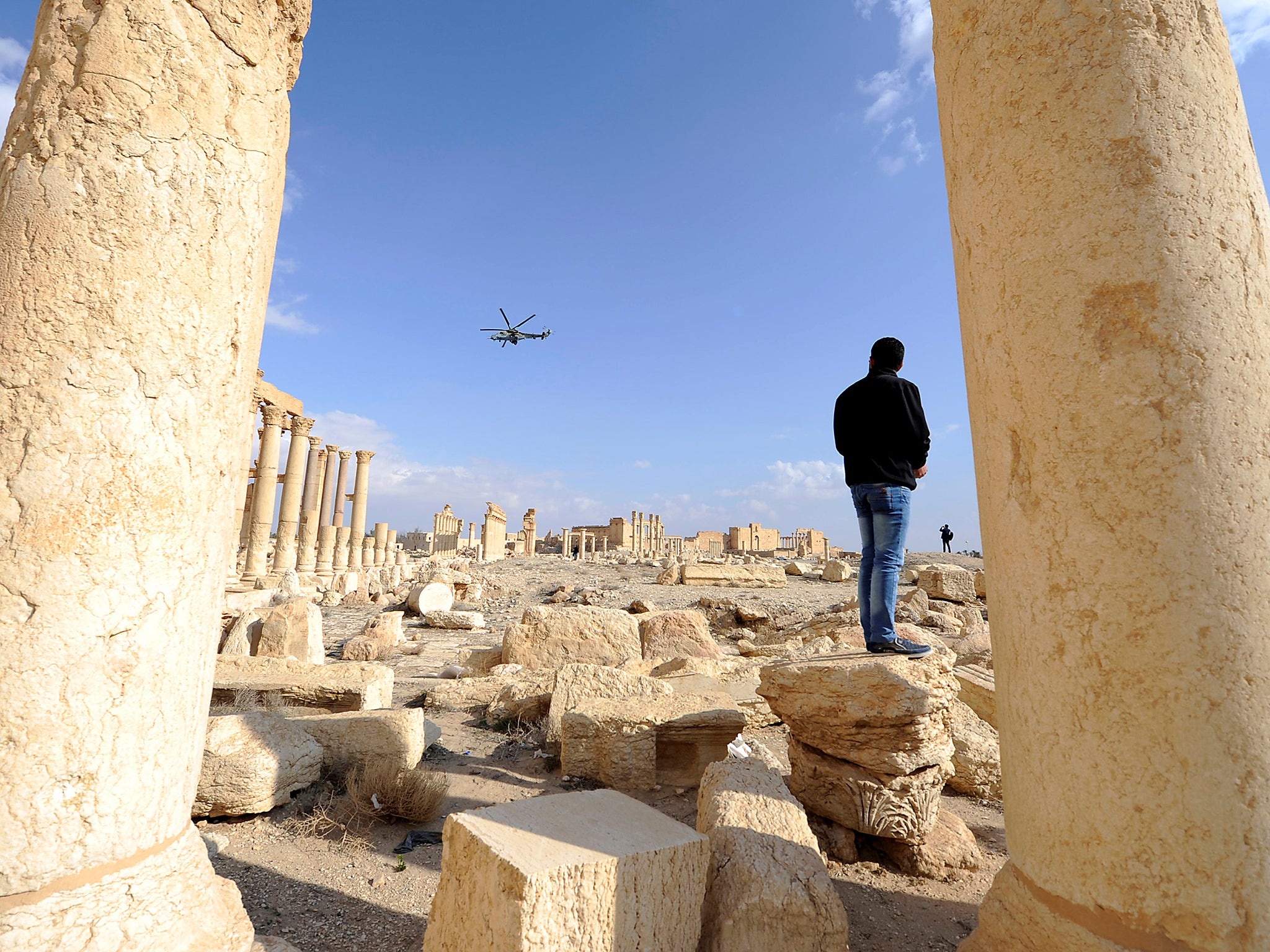Isis’s destruction of an ancient civilisation mattered more to the west than human casualties
Palmyra offensive: As the world baulked at the unfolding savagery, one site became a political and cultural hostage, writes Robert Fisk

The first time Isis attacked Palmyra, their men arrived at night in five mile-long columns of tanks and trucks, suicide bombers in armoured vehicles at the front, fighters at the back. The Syrian soldiers defending the east of the Roman city on 12 May 2015 – their records showed that the first Isis units arrived at 9.45pm – fired their Milan anti-tank rockets at the suiciders, but the bombs had been packed so densely into the Isis vehicles that the explosions blew up not only the bombers but the Syrians who killed them. The Isis bands poured, 2,500 of them, towards the ancient city of Queen Zenobia – from Raqqa, the Wadi Abiat Dam, the T3 natural gas plant and from two districts of Hama province.
The general commanding Syrian forces would recount later how his 40 soldiers on the eastern highway out of the city fought to the end. They were never seen again. Twenty-five soldiers were later paraded in the old Roman theatre – and shot through the back of the head, one by one, by a boy-child who was later taken away by Isis. Civilians were interrogated and at least 12 were taken to a main square opposite a mosque where their heads were sliced off. After weeks of interrogation intended to make him reveal where Roman treasures had been stored, the elderly head of antiquities, Khaled el-Asaad, was publicly beheaded, his body tied to a Roman pillar, his spectacles perched back upon his nose by his killers. In reality, the treasures had been taken to Damascus only hours before Isis entered Palmyra.
When I arrived in the oil fields just west of Palmyra, photographs had already emerged from the newly captured city. One – sent out by an oil worker who later escaped – showed the 12 decapitated corpses, heads rolled off into pools of blood, lying in the street. I needed to send these pictures to The Independent – but carefully cropped one of the photos so that it showed merely a single body amid the street of slaughter, prone amid liquid which was obviously blood. I hoped this might be printable.
Subscribe to Independent Premium to bookmark this article
Want to bookmark your favourite articles and stories to read or reference later? Start your Independent Premium subscription today.
Join our commenting forum
Join thought-provoking conversations, follow other Independent readers and see their replies